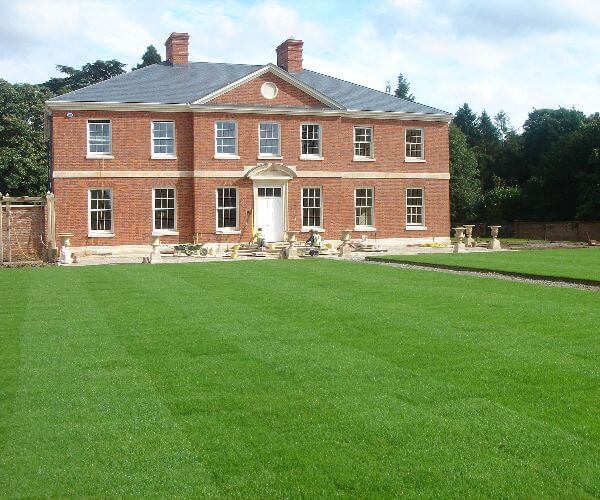- Lawn Turf
- Artificial
- Soil
- Timber
- Composite Decking
- Paving & Stone
Get In Touch With Our Experts Today!
Give us a Call! - Seed & Fertiliser
- Dressing
- Bark

August 16, 2017
Where moisture has been in short supply, grass plants have been forced into dormancy, whereby they essentially close themselves down. This has resulted in an excess of dead plant material, adding to the thatch on the surface and choking the grass as it tries to recover. This leads to brown patches that appear to be taking longer to recover and the quicker that the green areas are recovering, the quicker these patches are appearing.
Furthermore, where any cultural activities were carried out in the Spring or if the grass was cut too short or too often during the hot weather, there has been unfortunate plant damage; this is mainly due to the heat that we experienced very early in the spring months. In some cases, there will be a need for some remedial work, including the removal of the dead material and light overseeding – this is a simple process that is best carried out from mid to late August as the moisture levels should begin to improve.
Another potential reason for the brown patches in your lawn is ‘Dry Patch’, which is caused by dry weather conditions. This can be a very irritating problem as it leaves unsightly dry patches throughout. Dry patches are caused by the production of waxy resins from naturally occurring soil fungus. These resins bind the soil particles together, causing the soil to repel water and become hydrophobic which means that the water cannot penetrate. Aeration and the application of silicon wetting agents can help solve this problem rapidly, but only when the soil moisture levels begin to increase.
On heavier soils, where moisture has not been so critical, recovery has already started and the lawns will be recovering well. Nutrition levels will need to be increased as that grass begins to grow vigorously whilst the conditions continue to improve. However, care should still be taken to use controlled release fertiliser as there is still the risk of dry weather.
As grass growth increases we need to make sure mowing is carried out on a regular basis to prevent any further thatch build up. Despite the typical British summer weather, we may still experience some hot weather so try to keep the cut height above 25mm to prevent damage to the plants from heat and as always, please avoid cutting grass in hot weather as this can cause further damage. There will also be a flush of weeds which can be dealt with using selective herbicides.
With any new turf, care should be taken to make sure moisture levels are kept at a sensible level. If it’s too dry then the juvenile root system will not be able to extract enough water for the plants but if it’s too wet, the roots will not begin to grow down though the soil as they will not develop in anaerobic conditions. Treat your lawn like a potted plant – feel the soil to make sure it is damp and not dry, or too wet.
Nutrition levels are important, but it is critical to use a controlled release fertiliser or we stand the risk of scorching the root system which will be very tender. We like to use the ‘little and often’ method.
CALL US NOW ON 01234 818 253